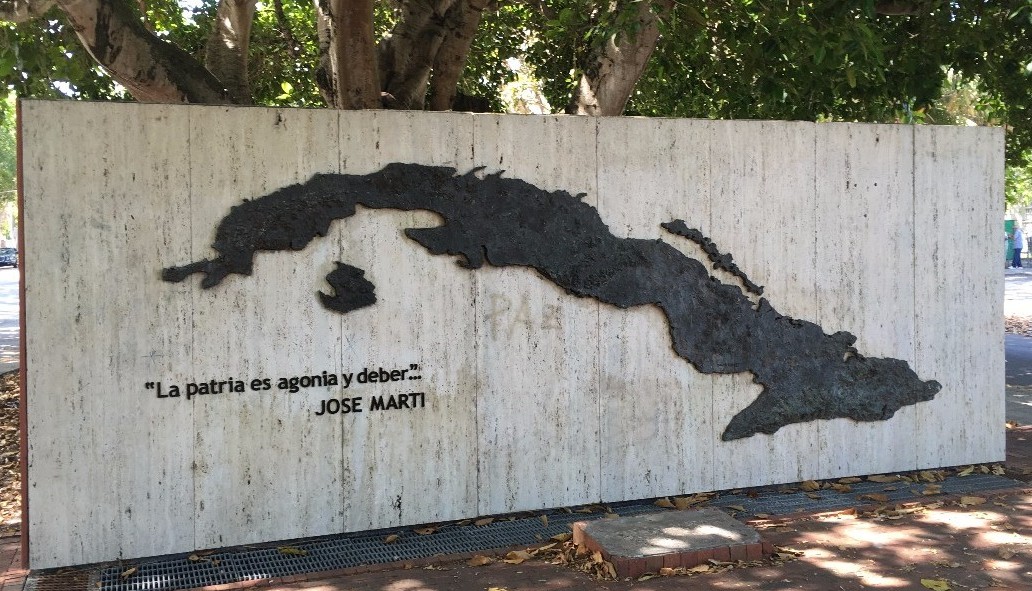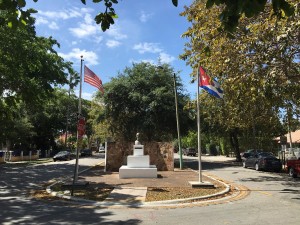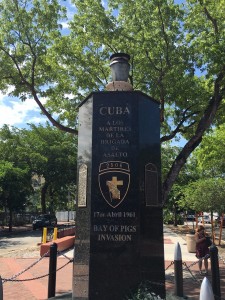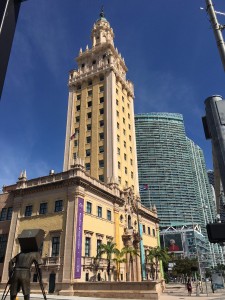
Miami at the Center of the Cuban- American Relationship
No one can understand the relationship between the United States and Cuba over the last 60 years without visiting Miami. While the decisions about embargoes, diplomatic relations, or confrontation may have been made in Washington and Havana, the Cuban-American experience was lived in Miami.
As ASP begins a new program on how to build confidence in the new opening with Cuba, I thought it would be important to go to Miami. In two days, I would talk to some of the people who have the most at stake in rebuilding the relationship, and I would also see how the Cuban-American experience is lived and remembered in Miami.
The Freedom Tower
My first stop was at the Freedom Tower right near the Port of Miami. Originally built as the headquarters of the long defunct Miami Daily News, the building would became the “Ellis Island of the South” from 1962 to 1974 when the US government pressed it into service. The building still carries some evidence of its 1920s era decadence, with a large stone foyer and gilded ceiling. As used in the 1960s, it became the first stop for Cuban refugees entering the United States after their journey across the Straits of Florida. In the Cuban Assistance Center there, the US government helped Cubans with everything from health care to housing, finances, and education. This was more than just a place to get their official papers, it was a place to introduce Cubans to the American people. Even though it only served in this capacity for a relatively short time, the Freedom Tower still occupies an iconic place in the Cuban American experience.
Little Havana
 From there, I drove down Flagler street, across the Miami River into Little Havana. Although the prime real estate along the famous Calle Ocho is now the start a too many tourist bus rides, and cigar stores beckon souvenir hunters, there is still a thriving Cuban community here. I wandered into the “Domino Park”, a member’s- run park where old men play dominos at shaded tables. To the click-click background noise, an old many asked where I was from in broken English and invited me to sit for awhile. Even though the two countries are resuming diplomatic relations, these men wouldn’t dream of returning to Cuba until after Castro has left power- or was buried. Most of these men had come to the US for what they had thought would just be a short 5 years or so- and here they are 50 years later, still replaying the lost scenes of Havana.
From there, I drove down Flagler street, across the Miami River into Little Havana. Although the prime real estate along the famous Calle Ocho is now the start a too many tourist bus rides, and cigar stores beckon souvenir hunters, there is still a thriving Cuban community here. I wandered into the “Domino Park”, a member’s- run park where old men play dominos at shaded tables. To the click-click background noise, an old many asked where I was from in broken English and invited me to sit for awhile. Even though the two countries are resuming diplomatic relations, these men wouldn’t dream of returning to Cuba until after Castro has left power- or was buried. Most of these men had come to the US for what they had thought would just be a short 5 years or so- and here they are 50 years later, still replaying the lost scenes of Havana.
 History is never far away along Calle Ocho, as the Cuban Memorial Boulevard intersects with Little Havana’s main drive. This street memorializes those who fought for a free Cuba. Starting with the iconic 19th century nationalist poet, Jose Martì, the line of memorials goes through those killed in the ill-fated 1961 Bay of Pigs invasion.
History is never far away along Calle Ocho, as the Cuban Memorial Boulevard intersects with Little Havana’s main drive. This street memorializes those who fought for a free Cuba. Starting with the iconic 19th century nationalist poet, Jose Martì, the line of memorials goes through those killed in the ill-fated 1961 Bay of Pigs invasion.
It is interesting how Martì is claimed by both sides of the revolution – an almost tragic figure who spent his life arguing for a Cuban nation separate from both Spain and the United States. Once he got a chance to fight for his ideals in 1898, he was killed before he had a chance to see his dream of independence from Spain achieved – though dependence on the United States increased. Perhaps had he survived, he could have negotiated the fought balance better. Or perhaps he’s remembered so fondly because he never had to make the difficult decisions associated with actual governing.
Optimism about the US – Cuban Relationship
That evening, I had the opportunity to discuss the changing relations between Cuba and the United States with a group of Cubans, ranging from an exile who came in 1966 and will go back “one day” to a couple who go almost monthly, and were flying down to Havana the next day, to a man who had spent 21 years as a political prisoner in Cuba, just for daring to insist that Cubans should have basic human rights. All agreed that the opening between the US and Cuba was beginning a process that would eventually lead to greater opportunities for Cubans, and the prospect for a renewed relationship between the US and Cuba.
There is a perception that history has made Miami’s Cuban community universally opposed to the new relationship. Instead, I saw that history is alive in Miami, and memories are long. But, at least among those that I spoke with, there was a tempered optimism that – perhaps – this time was different, and the 60 year split between our nations may soon be over.






